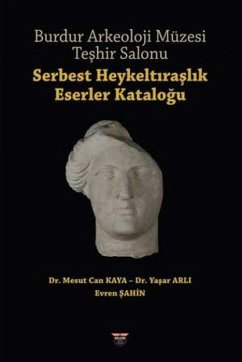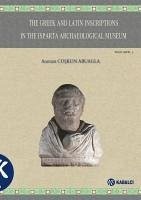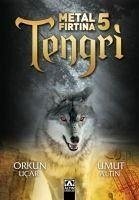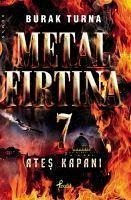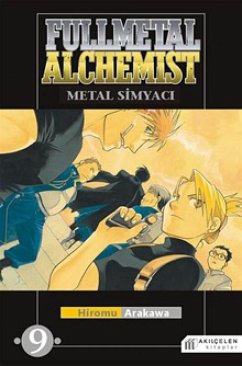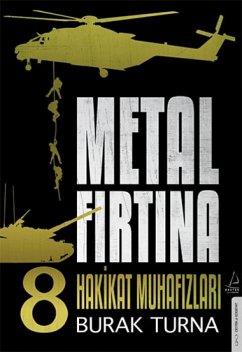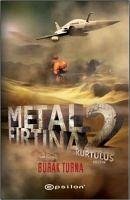
Metal Statuettes From Pisidia and its Surroundings in Burdur Museum
Versandkostenfrei!
Versandfertig in über 4 Wochen
16,99 €
inkl. MwSt.

PAYBACK Punkte
8 °P sammeln!
In this book, metal figurines found in Burdur Museum are introduced. The vast majority of the statuettes are bronze. Besides, there are silver, gold, lead and copper works. Find places have been added to the inventory of some figurines. However, since they came to the museum by purchasing, the find places of the majority of them are not exactly clear. With the work done, it was tried to be explained that the statuettes were captured from the Pisidia region and its surroundings. Figurines from the Pisidia Region were found from the ancient cities of Cremna, Ceraitai, Hadriani. Among the cities ...
In this book, metal figurines found in Burdur Museum are introduced. The vast majority of the statuettes are bronze. Besides, there are silver, gold, lead and copper works. Find places have been added to the inventory of some figurines. However, since they came to the museum by purchasing, the find places of the majority of them are not exactly clear. With the work done, it was tried to be explained that the statuettes were captured from the Pisidia region and its surroundings. Figurines from the Pisidia Region were found from the ancient cities of Cremna, Ceraitai, Hadriani. Among the cities close to Pisidia are only finds from Cibyra. However, it should be noted that there are works that may originate from Pamphylia, Lydia, Phrygia, even if there are individual examples. The statuettes have a wide date range from the Late Bronze Age to recently. However, most of them belong to the Roman Period. In this study, 7 groups of statuettes were classified according to their periods. The 8th section consists of examining the false figurines. This book contains detailed descriptions, dimensions, views from different directions, analysis of the 66 statuettes and suggestions about where they might have been found. This book, which provides acceptable chronology and presents all the figurines in a holistic order, covers the first metal figurine work of the Pisidia Region. Bu kitapta Burdur Müzesinde bulunan metal heykelcikler tanitilmaktadir. Heykelciklerin büyük cogunlugu bronzdur. Yani sira gümüs, altin, kursun, bakir eserler de bulunmaktadir. Bazilarinin envanterlerine buluntu yerleri eklenmistir. Ancak Satin alma yolu ile müzeye geldigi icin büyük cogunlugunun buluntu yerleri tam olarak belli degildir. Yapilan calismayla heykelciklerin Pisidia bölgesi ve cevresinden ele gectigi aciklanmaya calisilmistir. Pisidia Bölgesinden heykelcikler Kremna, Keraitai, Hadriani antik kentlerinden ele gecmistir. Pisidiaya yakin kentler arasinda ise Kibyra buluntulari yer almaktadir. Bununla birlikte tekil örnekler de olsa Pamphylia, Lydia, Phrygia kökenli olabilecek eserlerinin de oldugunu belirtmek gerekir. Heykelcikler Gec Tunc Cagindan yakin zamanlara degin genis bir tarih araligina sahiptir. Ancak büyük bölümü Roma Dönemi buluntularidir. Bu calismada heykelcikler dönemlerine göre sinifl andirilmis, 7 adet grup olusturulmustur. 8. Bölümde sahte heykelcikler incelenmistir. Bu kitap, 66 adet heykelcigin detayli tanimlari, ölcüleri, farkli yönlerden görüntüleri, veri analizlerini, nerede bulunmus olabileceklerine dair öneriler icerir. Kabul edilebilir kronoloji veren ve tüm heykelcikleri bütüncül bir düzen icerisinde sunan bu kitap, Pisidia Bölgesinin ilk metal heykelcik calismasini kapsar.



